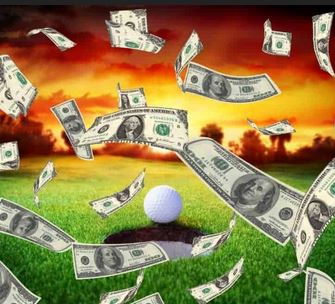Podcast: Play in new window | Download
Subscribe: RSS
In the past several weeks, longtime PGA golf stars such as Phil Mickelson, Dustin Johnson, Bryson DeChambeau, and Brooks Koepka have joined the new LIV Golf league.

Each has earned millions of dollars playing golf on the PGA Tour. Phil Mickelson won $94 million during his 30 years on the tour. DJ is right behind Mickelson with $74 million in tournament winnings. DeChambeau has “only” won $26 million while his arch-enemy, Koepka, has already pocketed nearly $38 million during his relatively short career.
As a result of their frequent exposure on television with the PGA Tour, each player has earned several times that amount just from their commercial endorsements.
Unlike other sports, professional golfers do not work for the PGA Tour. As an independent contractor, these golfers must pay for their own travel and lodging costs when traveling to the weekly events.
There are a number of other people who have their hand in the pro golfer’s wallet, too.
A top-125 golfer’s caddy will pocket 6% of the player’s earnings for a made cut, 8% for a top 10 finish, or 10% for a win. An average PGA Tour caddy now earns about $140,000 per year.
Then there is the golfer’s agent. For at least 10% of the golfer’s earnings, the agent will cut deals for the player’s commercial endorsements and along with lucrative corporate outings. This is where a professional golfer is paid handsomely to put on a brief golf exhibition, eat a rubber chicken dinner, and address a group of corporate executives at a resort location.
Don’t forget a personal trainer (1 to 3% cut) or the mental coach (1-2% cut). Plus, the golfer also pays about $10,000 per year for disability insurance. Over the course of a year, most professional golfers also drop $5K or more annually in tips to the locker room staff at local venues.
For a top-125 level golfer earning $2 million annually on the PGA Tour, you must subtract about $500,000 for these expenses and costs.
Don’t forget about Uncle Sam’s current maximum tax rate of 37%, too! That leaves a successful PGA golfer with less than 50% of his earnings on tour every year.
Though most of us would love to have that type of problem, the travel required to earn significant money on the PGA Tour works against any player who values having a balanced family life. During golf’s lower paydays of the 1960’s, Jack Nicklaus never spent more than two consecutive weeks on the PGA Tour prior to coming home for at least a week.
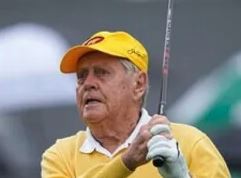
He said, “I always loved to get home. Because when I went back to play golf, my mind was fresh and clear and I could do whatever I wanted to do. If all you think about is golf …”
The balance between a professional golfer’s time on the PGA’s golf courses versus his time spent with family has been an ongoing issue for many decades. Other successful golfers such as Byron Nelson, Gary Player, and Bruce Lietzke also played a bare-minimum number of PGA Tour events in order to have more time with their families, too.
Enter the LIV Golf Invitational Series in 2022.
Backed by a virtually unlimited supply of money from wealthy Saudi Arabian sponsors, a new golf league just hit the scene in June after years of discussion. Headed by World Golf Hall-of-Fame star Greg Norman (who has long disliked the PGA Tour), the new golf tour is effectively buying men’s professional golfers to play in the league’s inaugural season of just eight events this summer and early fall.
Each LIV Golf tournament is just 54 holes (LIV = 54 in Roman numerals). With no weekly cuts for the golfers, everyone in the field earns a minimum paycheck. Each tournament features a whopping $20 million purse for the field of 48 players.
By contrast, the 2022 PGA Tour events currently average about $7 million. Of the 144 players who will tee-up on Thursday at PGA Tour event, only the top half of the field (72) after 36 holes will cash a paycheck that week by playing in the final two rounds over the weekend.
In the inaugural LIV Golf event two weeks ago in London, Charl Schwartzel pocketed $4 million for his victory while the last place finisher (Andy Ogletree) still took home $120,000.
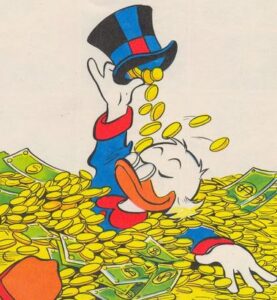
Phil Mickelson reportedly accepted a guarantee of $200 million from the new LIV Golf league. It doesn’t matter how well he plays in those tournaments, either. Other well-known American major championship winners such as Dustin Johnson, Bryson DeChambeau, Brooks Koepka, and Patrick Reed have signed guaranteed money deals to switch to the LIV Golf tour as well. Like Mickelson, they will earn millions for just showing up to play in the remaining 54-hole LIV golf tournaments.
As you might expect, the PGA Tour is not happy about this.
These members of the PGA Tour have been suspended indefinitely. Likewise, the European Tour (now called the DP World Tour) has chosen to fine any of their members playing in LIV events $120,000 (US dollars). These players are also suspended from competing in Euro Tour events for the next month.
Phil Mickelson lit a fire last fall by complaining about the PGA Tour (as part of their contract with players) retaining the media rights to all of its golfers and sitting on a rapidly growing pile of money. Mickelson thinks this incremental revenue should be shared with the players.
The PGA Tour has owned the media rights to its players for decades. It allows the tour an opportunity to market the stars participating in any event for commercial purposes. This right allows the PGA Tour to enhance the commercial value of its weekly events by marketing the golfers in order to increase the value of network television coverage, ticket prices at a particular event, etc. Without such rights, though, the PGA Tour claims it would not be able to offer such large purses for its tournament schedule.
Phil Mickelson believes that the today’s media rights given by the players to the PGA Tour have become far more valuable today than in the pre-internet years. The media rights for every PGA Tour event (past and present) can be re-sold by the PGA Tour.
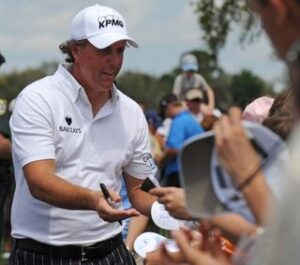
Mickelson speculates that there has been a lot of money socked away by the PGA Tour in recent years from digital sales of the players’ media rights. Mickelson believes that the PGA needs to change this rule and share in the growing pot of money derived from its players.
The PGA Tour claims that it returns 55% of total revenues back to the golfers in prize money, deferred retirement compensation, and other benefits. Though Phil Mickelson feels that the players’ current split is closer to 30%, the PGA Tour’s claimed payout rate places pro golfers in line with the players’ cut in most professional sports.
For comparison, most businesses consider labor costs to be about 50% of the total cost of operation.
In an effort to combat the growing attrition of players to the new LIV Golf tour, the PGA Tour announced last week that it will significantly increase tournament purses in the coming year for several events (up to $20 million per tournament). It will also provide a new series of tournaments reserved for the top 50 players each season. Those tournaments will not feature a cut line.
In 2024, the PGA Tour will start its new golf season beginning in January (like it did years ago) and end its season in the fall. That means fewer golf tournaments each year and a true off-season for the players.
So, where did the PGA Tour just find all of this new money to make these changes?
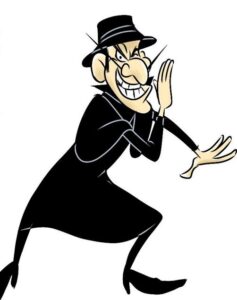
Perhaps Phil Mickelson may be onto something by claiming that the PGA Tour has been sitting on more money than the tour has been willing to admit.
In my opinion, the PGA Tour still does not understand that most of the established golf stars prefer to play in fewer golf tournaments each season. The top golfers (mostly aged 25-40) are at the age when most have a growing family to care for. As Jack Nicklaus wisely pointed out nearly 60 years ago, professional golfers with a young family want to spend more time at home.
This shortened season of the new LIV Golf Tour has been a major reason why some of the established PGA veterans have jumped ship. The LIV’s limited tournament schedule allows for more family time. Meanwhile, the players with contracts calling for guaranteed money can be invested by the players to cover expenses during their golden years.
That’s a win/win!
If you look at the golfers who have bolted for the new LIV Tour, several stars are past their prime (such as Phil Mickelson and Lee Westwood). Several of the other notable PGA Tour golfers making the switch may have seen their best golf days in the rear view mirror (such as DJ, DeChambeau, Koepka, and Reed).
This is likely a difficult and personal decision for each golfer contemplating making the move.
The PGA Tour has functioned as a monopoly for years, but it has given its best players an opportunity to earn a great living on tour. Some have become household names due to their weekly presence on national television. A few have parlayed that fame into even more lucrative deals as corporate pitchmen.
Unlike the PGA Tour, the LIV Tour backers are not worried (for now) about how much money they might lose in this new venture. As of this writing, the LIV events are only seen on You Tube and on the LIV website. Without a traditional network television deal, the home viewing audience will remain a fraction of the PGA Tour’s weekly television total.
The LIV Tour backers simply don’t care. As long as the new league plays one or more its tournaments in Saudi Arabia every year, this group literally has money to burn.
In summary, professional golf’s current mess is entirely about greed from the vantage point of each of the specific parties involved.
The PGA Tour (which has operated without competition for decades) has the most to lose in this short term battle. The PGA Tour now has fewer established stars on board than it did just one month ago. The future financial fallout is a bit uncertain.
As for the wealthy Saudi Arabian backers of the LIV Tour, they can and will lose millions of dollars on this start-up venture. They have very deep pockets.

This isn’t going to be a fair fight.

